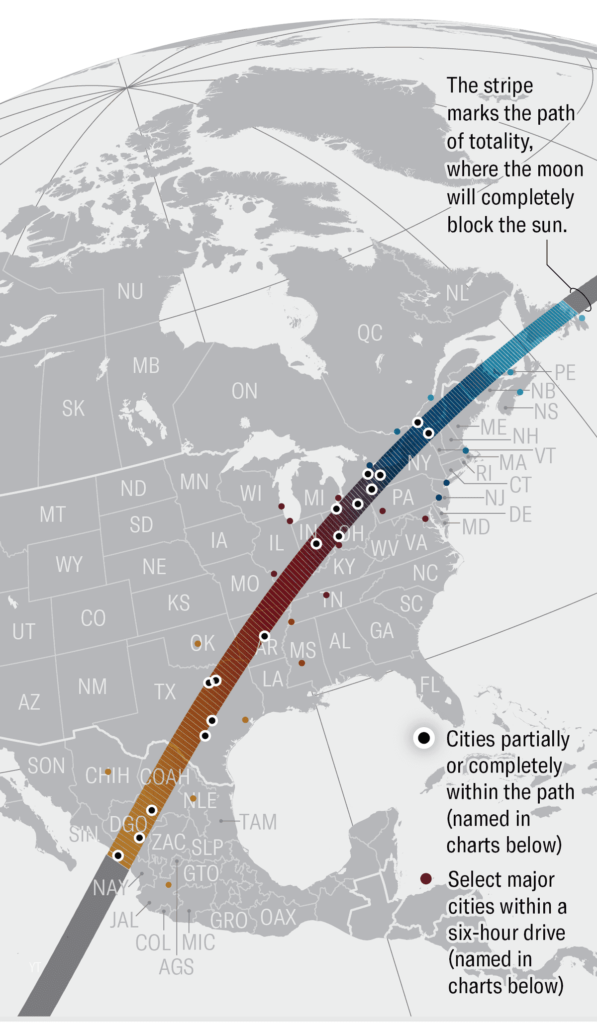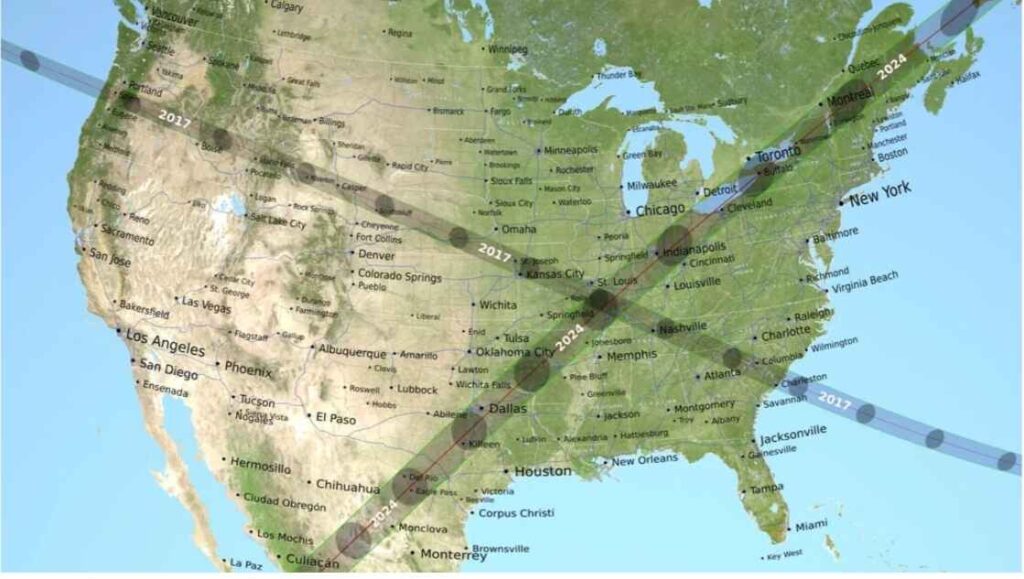On April 8, an enchanting celestial event is poised to captivate the United States as the Moon’s shadow elegantly crosses the nation during a highly anticipated Total Solar Eclipse. This upcoming phenomenon evokes memories of the awe-inspiring eclipse that unfolded on August 21, 2017. During the 2017 eclipse, a staggering 215 million U.S. adults, constituting 88% of the population, marveled at the cosmic ballet either in person or through electronic means.

As the Moon gracefully positioned itself in front of the Sun, raha hun it cast shadows, creating an enthralling dance of light. The approaching eclipse in 2024 promises to be even more immersive, characterized by unique features in its trajectory, timing, and potential scientific revelations.
The 400 Factor
The sun, a celestial giant overshadowing the moon by a factor of 400, coincidentally lies 400 times farther away from us. This cosmic alignment results in the moon perfectly covering the sun’s face during their orbits, giving rise to the mesmerizing phenomenon known as a total solar eclipse.
However, this alignment is observable only within a narrow corridor known as the path of totality, which will gracefully traverse North America on April 8. With over 40 million people residing within this path and millions more within a short travel distance, the anticipation is high. Spring weather conditions may influence visibility, particularly in the northeastern U.S. and maritime Canada, known for cloudier skies during this season.

Michael Zeiler, a seasoned eclipse enthusiast and curator of the Great American Eclipse website, suggests closely monitoring the weather and maintaining flexibility in travel plans. Zeiler, having witnessed 11 eclipses previously, attests that the effort to witness totality is always rewarding, guaranteeing that no spectator has ever regretted the endeavor.
Locations where the initial shadow of the total solar eclipse becomes visible
The moon’s shadow will first touch land in Sinaloa, Mexico, swiftly journeying up to Labrador, Canada, completing its continent-spanning traverse in just an hour and 35 minutes. Within the shadowed region, the duration of totality will peak at the centerline, reaching an emotional four and a half minutes in select locales.
While a partial eclipse offers a bewitching display with weakened sunlight and crescent-shaped shadows, for avid eclipse enthusiasts, the umbra—the central, darkest part of the moon’s shadow—is the ultimate spectacle. Within the umbra, the moon entirely obscures the sun, plunging the sky into a twilight blue. The horizon glows with evening hues, and the ethereal corona of the sun becomes visible, extending gracefully across the darkened sky.
ARTICLE SOURCE
ALSO READ – How to Earn $100 per Day in the USA:Unlocking Financial Freedom …
